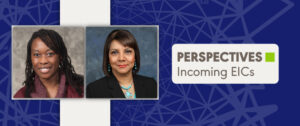Well-known is the shortage of PhD academic-researchers in audiology, speech-language pathology, and speech and hearing science. The severity of this issue was officially recognized by ASHA and the Council of Academic Programs in Communication Sciences and Disorders (CAPCSD) in a 2002 report: Crisis in the Discipline: A Plan for Reshaping Our Future. Since that time remarkable progress has been made to address this issue. This article focuses on the positive progress made to address the shortage of PhDs in audiology and hearing science as presented in the Report of the 2013-2018 Academic Affairs Board Strategic Plan to Increase the Student Pipeline and Workforce for PhD Researchers and Faculty-Researchers. The report describes the outcomes of the third in a series of strategic plans implemented collaboratively by ASHA and CAPCSD.
The Strategic Plan/The PhD Plan
The 2013-2018 Strategic Plan focused on increasing the student pipeline and workforce for PhD researchers and faculty-researchers. This Plan was developed by ASHA’s Academic Affairs Board (AAB) in 2013. It was designed to (a) monitor trends in communication sciences and disorders (CSD) education and support and (b) enhance capacity building for academic-researchers in audiology, speech-language pathology and speech and hearing science. This project was a large undertaking that involved collaborative efforts of AAB members, ASHA staff, CAPCSD, and CSD academic programs.
The four primary objectives in the PhD Plan included:
- Enhancing the science base of the curriculum at the undergraduate level and sharing best practices and creative models of PhD education with the goal of better preparing PhD faculty-researchers in CSD.
- Communicating to a wide audience, including the general public and those in the scientific arena, about audiology, speech-language pathology and speech and hearing sciences and the urgent need for more CSD PhDs.
- Developing programs to increase the recruitment and retention of PhD students and faculty-researchers.
- Advocating for funding of PhD education and research in communication sciences and disorders.
Overall Progress Made in CSD Research Doctorates between 2013 and 2018
On behalf of all of those involved in the PhD Plan, it is gratifying to report that clear and significant progress was made on all four primary objectives. Between 2013 and 2018, ASHA and CAPCSD implemented many initiatives and programs (e.g., state and national presentations, public relations campaigns, award and mentoring programs, and publications concerning CSD research) to achieve positive outcomes. Notably, progress exceeded expectations in three areas:
- The actual number of CSD research doctorate degrees earned annually grew by 16%
- The actual percentage of doctoral recipients who went on to research and academic positions increased by 223%
- The actual percentage of the CSD doctoral recipients who took positions as faculty-researchers in CSD academic programs increased by 18%
Two data collection areas showed little or no change between 2013 and 2018.
- The first concerned the ability of PhD programs to fill the seats available for new students. A 4% increase was observed, which was lower than the targeted 10% rate. This outcome reflected the increase in program capacity over the same time period, resulting in a greater total number of seats available in 2018 than in 2013.
- Likewise, the percentage of PhD graduates who went on to postdoctoral positions did not increase, despite the fact that 93% of available postdoc positions were filled each year. This finding most likely reflects a lack of growth in the availability of postdoctoral opportunities in CSD in 2012 to 2018.
Progress Made in Audiology/Hearing Science Research Doctorates between 2013 and 2018
Encouraging results specific to audiology/hearing science include the following highlights:
- From 2013 to 2018, the number of PhD degrees granted ranged from 25 to 67 each year, with an average of 39 and a total of 234. These numbers demonstrate consistent growth compared to the previous decade, during which the growth was inconsistent.
Between 2008 and 2018, there was also an increase (from 17 to 113) in the number of individuals holding both the AuD and the PhD. Specifically, the percentage of ASHA-certified audiologists who hold the AuD and PhD increased from 0.1% (n = 17) in 2008 to 0.8% (n = 113) in 2018 but remains less than 1% of CCC-A audiologists. Perhaps most remarkable is the fact that, while the overall growth of the audiology profession remained essentially unchanged between 2008 and 2018, the number of PhDs awarded in audiology/hearing science in the same time period increased by 7%. These data mitigate concerns that a clinical doctorate in audiology would draw potential candidates away from pursuing a PhD. Additionally, the percentage of ASHA-affiliated PhD faculty certified in audiology who are early-career PhDs (age 40 or younger) increased 7% between 2008 and 2018 (from 20% in 2008 to 27% in 2018). In contrast, the aging of PhD faculty in audiology/hearing science has, unfortunately, continued to grow over the past 16 years. In 2018, the median age of audiology/hearing science faculty was 57 compared to 55 in 2008 and 51 in 2002.
Closing Remarks
The PhD Plan describes the ongoing need to recruit CSD PhD students into the pipeline and increase the number of PhD academic-researchers, in order to sustain the professions of audiology, speech-language pathology and speech and hearing science. Both ASHA and CAPCSD have plans to carry on with their individual and joint efforts. This article underscores the critical need of redoubling our efforts to recruit younger audiologists into academic-research careers. Work will continue to recruit, retain and support PhD students, advocate for PhD education, fund CSD research, evolve PhD curricula, and enhance outreach to the public and scientific communities. We entered a new decade with positive progress towards addressing the PhD shortage in CSD, and much more to do to maintain and extend these gains in the years to come.
Acknowledgement: I want to recognize the enormous amount of work done by members of ASHA’s Academic Affairs Board, Academic Affairs and Research Education staff, and Surveys and Analysis staff to gather the data and prepare the report described here.












